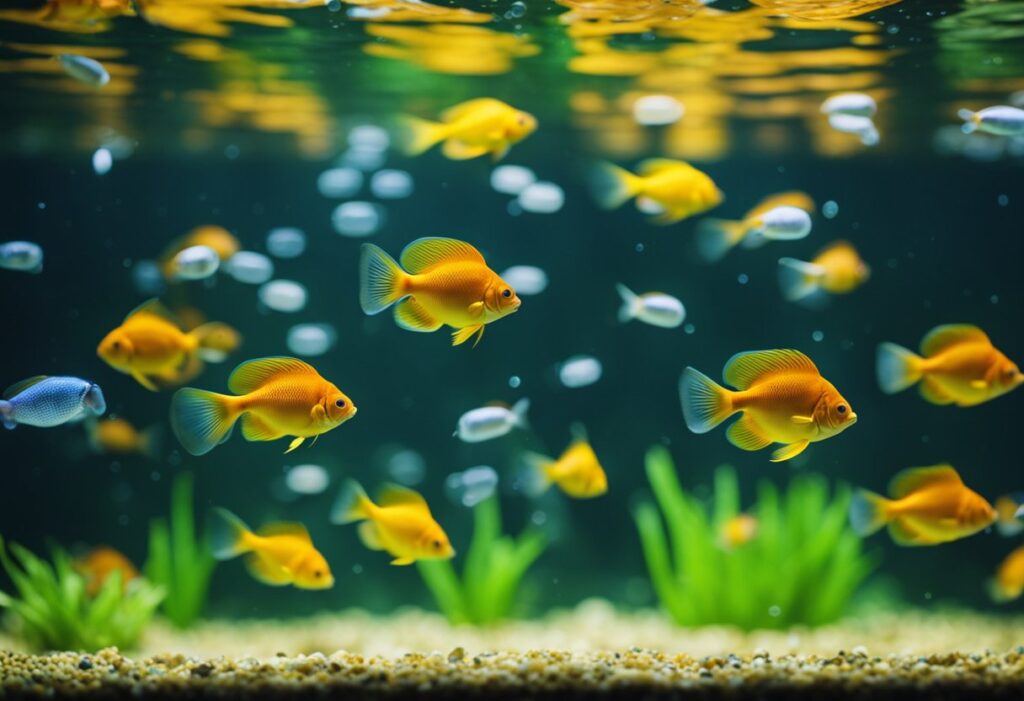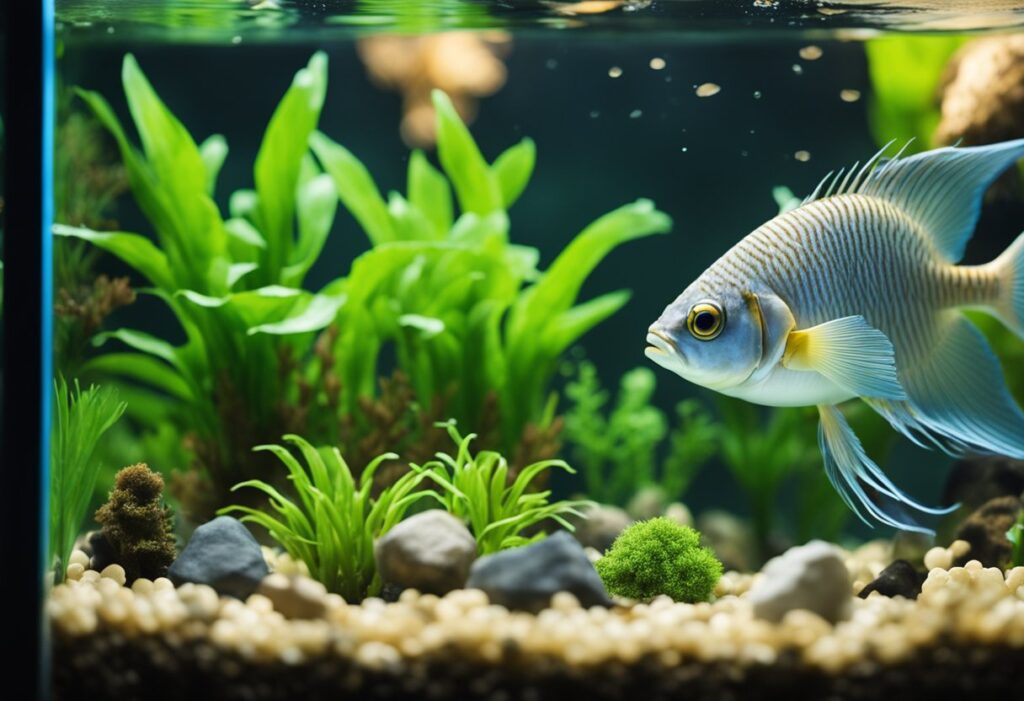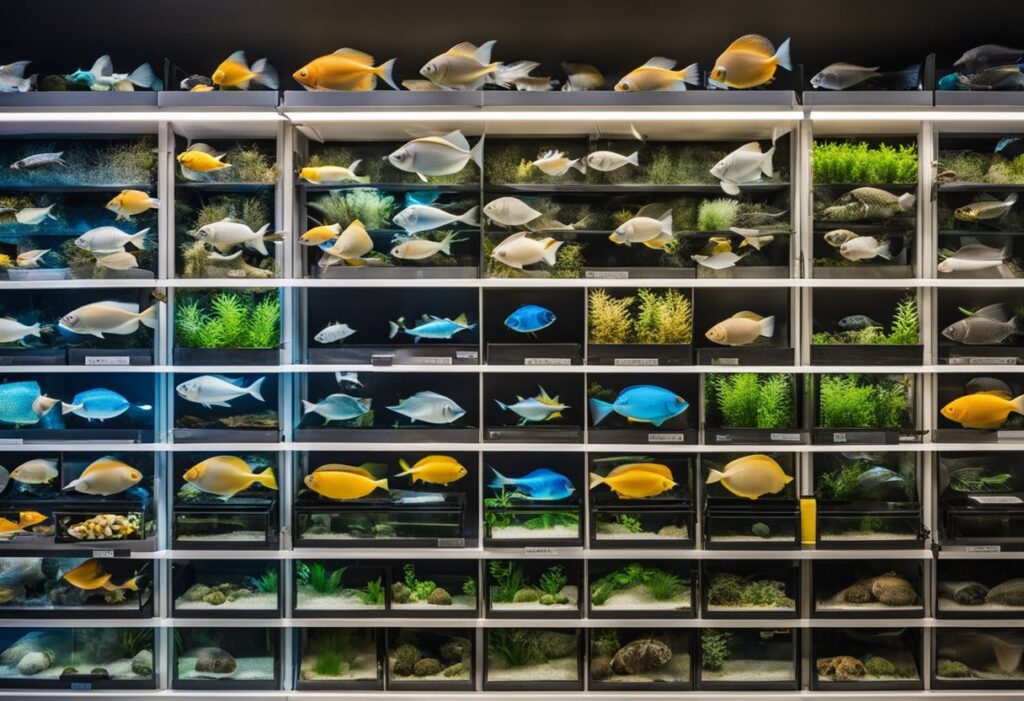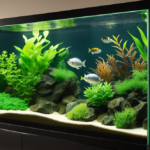Fish tank filters are an essential component of any aquarium setup. They play a crucial role in maintaining water quality and ensuring the health and well-being of your fish. Without a proper filtration system, fish waste and uneaten food can accumulate in the water, leading to an increase in harmful toxins and bacteria that can harm your fish.

There are several types of fish tank filters available on the market, each with its own unique advantages and disadvantages. Some of the most common types of filters include canister filters, power filters, internal filters, and undergravel filters. Each type of filter has its own set of benefits and drawbacks, and choosing the right one for your aquarium will depend on several factors, such as the size of your tank, the type of fish you have, and your budget.
When it comes to aquarium filtration, there are several key components that make up a filter system. These include mechanical filtration, biological filtration, and chemical filtration. Mechanical filtration involves removing debris and waste from the water, while biological filtration involves using beneficial bacteria to break down harmful toxins. Chemical filtration involves using activated carbon to remove impurities and odors from the water. By understanding the different components of a filter system, you can optimize filtration efficiency and ensure that your fish are living in a healthy and safe environment.
Key Takeaways
- Fish tank filters are essential for maintaining water quality and ensuring the health of your fish.
- There are several types of fish tank filters available, each with its own unique advantages and disadvantages.
- A proper filter system consists of mechanical, biological, and chemical filtration components, which work together to optimize filtration efficiency.
Fish Tank Filters
| Product Name | Rating | Price |
|---|---|---|
| Aqueon Filter Cartridge Small/6 Pk | 4.8 | $15.93 |
| Marineland Power Filter Cartridge Rite-E | 4.8 | $14.99 |
| Marineland Rite-Size Cartridge C, 6-Pack | 4.7 | $19.90 |
| Tetra ReptoFilter Cartridges Medium | 4.7 | $4.99 |
| Aqueon QuietFlow LED PRO Ammonia Reducer | 4.7 | $6.79 |
| Aqueon Tank Replacement Cartridges Small | 4.7 | $9.49 |
| Tetra Whisper Unassembled Medium | 4.7 | $8.43 |
| Aqua-Tech EZ-Change #3, 6-Pack | 4.7 | $13.97 |
| Marineland Eclipse Replacement Cartridge | 4.7 | $4.99 |
| Tetra Carbon Filters for Whisper EX | 4.7 | $10.13 |
| Tetra Whisper Filter Cartridges XS | 4.7 | $4.98 |
| AquaClear 50 Foam Filter Inserts | 4.7 | $2.99 |
| Aquatic Experts Aquarium Filter Floss | 4.7 | $19.99 |
| AquaClear 70 Activated Carbon Inserts | 4.7 | $5.44 |
| Tetra Whisper Bio-Bag Filter BLUE 3-Ct | 4.6 | $5.99 |
| Tetra Whisper Bio-Bag Filter Small | 4.6 | $4.45 |
| HiTauing 6 Pack Filter Cartridge | 4.6 | $9.99 |
| Koller Products Filter Cartridges Small | 4.6 | $18.89 |
| HITOP Dual Outlet Aquarium Air Pump | 4.4 | $15.99 |
| Tetra Whisper IQ Power Filter 20 | 4.4 | $18.99 |
| NICREW Slim Aquarium Filter | 4.4 | $11.99 |
| MarineLand Penguin 200 Power Filter | 4.4 | $28.91 |
| Tetra Whisper In-Tank Filter 40i | 4.3 | $14.99 |
| Tetra Whisper EX 70 Filter | 4.2 | $35.12 |
*Please note that prices are subject to change and may vary depending on the seller, location, and any applicable discounts or promotions. The ratings provided are based on customer reviews and may also change over time. Amazon Affiliate Link.
Types of Fish Tank Filters
When it comes to selecting the right filter for your aquarium, there are various types of filters available in the market. Each type of filter has its own unique features and benefits. In this section, we’ll discuss the most common types of fish tank filters.
Canister Filters
Canister filters are one of the most popular types of aquarium filters. They are powerful, efficient, and versatile. Canister filters are external filters that are placed outside the tank. They provide all three types of filtration: mechanical, chemical, and biological. They are suitable for larger tanks, typically over 40 gallons, and are ideal for keeping the water crystal clear.
Power Filters
Power filters, also known as hang-on-back filters, are the most common type of filter used in aquariums. They hang on the back of the tank and draw water out for filtration before returning it. Power filters are easy to install and maintain and are suitable for smaller tanks. They provide mechanical and biological filtration, but not chemical filtration.
Sponge Filters
Sponge filters are simple and inexpensive filters that are suitable for small aquariums. They provide mechanical and biological filtration and are easy to maintain. Sponge filters work by trapping debris in the sponge, and beneficial bacteria grow on the sponge’s surface, converting harmful toxins into less harmful substances.
Undergravel Filters
Undergravel filters are a type of internal filter that is placed beneath the gravel substrate. They provide biological filtration and work by creating a vacuum that pulls water through the gravel, which is where the beneficial bacteria grow. Undergravel filters are suitable for small aquariums and are relatively inexpensive.
Internal Filters
Internal filters, also known as box filters, are compact units that stick to the glass inside an aquarium. They provide mechanical and biological filtration and are suitable for small aquariums of 10 gallons or less. Internal filters are less common than in the past but are still very inexpensive and can be loaded with a variety of filter media.
In conclusion, choosing the right filter for your aquarium depends on various factors, including the size of the tank, the number of fish, and the type of fish. We recommend doing thorough research before buying a filter and selecting the best aquarium filter that suits your needs.
Key Components of Filter Systems
When it comes to fish tank filters, there are a few key components that are essential for their proper functioning. In this section, we will discuss the three most important components: filter media, pump and flow rate, and maintenance and setup.
Filter Media
Filter media is the material that is used to filter the water in your fish tank. There are several types of filtration media available, including mechanical, biological, and chemical. Mechanical filtration media removes debris and solid waste from the water, while biological filtration media removes harmful chemicals and toxins. Chemical filtration media removes impurities from the water using activated carbon or other chemicals.
It is important to choose the right filtration media for your fish tank based on the type of fish and plants you have. Some filtration media can be used for both freshwater and saltwater tanks, while others are specific to one type of tank.
Pump and Flow Rate
The pump and flow rate of your filter system are important factors to consider when setting up your fish tank. The pump is responsible for circulating the water through the filter media, while the flow rate determines how quickly the water is filtered.
It is important to choose a pump and flow rate that is appropriate for the size of your fish tank. A pump that is too powerful can create too much flow, which can be harmful to your fish. On the other hand, a pump that is too weak may not be able to properly filter the water.
Maintenance and Setup
Proper maintenance and setup of your filter system is crucial for the health of your fish and plants. Regular maintenance, such as cleaning the filter media and replacing the filtration media, is essential to ensure that the filter system is working properly.
It is also important to properly set up your filter system when you first install it. This includes choosing the right location for the filter, properly connecting the pump and filter media, and ensuring that the flow rate is appropriate for your fish tank.
Overall, the key components of filter systems are filter media, pump and flow rate, and maintenance and setup. By understanding these components and choosing the right filter system for your fish tank, you can ensure that your fish and plants thrive in a healthy and clean environment.
Optimizing Filtration Efficiency

As aquarium enthusiasts, we all want to provide the best possible environment for our aquatic friends. One of the key factors in maintaining a healthy aquarium is optimizing the filtration system. In this section, we will discuss the three types of filtration: mechanical, biological, and chemical, and how to optimize each one for maximum efficiency.
Mechanical Filtration
Mechanical filtration is the first stage of the three-stage filtration system. It is responsible for removing large particles and debris from the water. The most common mechanical filtration media are sponge filters, filter floss, and filter pads. To optimize mechanical filtration efficiency, it is important to clean or replace the media regularly. We recommend cleaning or replacing the media once a month, or more frequently if the aquarium is heavily stocked.
Biological Filtration
Biological filtration is the second stage of the three-stage filtration system. It is responsible for removing harmful toxins from the water. The most common biological filtration media are bio balls, ceramic rings, and zeolite. These media provide a surface area for beneficial bacteria to grow and thrive. To optimize biological filtration efficiency, it is important to ensure that the media is not clogged or packed too tightly. We recommend replacing 25-30% of the media every six months to maintain optimal efficiency.
Chemical Filtration
Chemical filtration is the third and final stage of the three-stage filtration system. It is responsible for removing dissolved impurities from the water. The most common chemical filtration media is activated carbon. Activated carbon removes impurities such as chlorine, chloramines, and heavy metals. To optimize chemical filtration efficiency, it is important to replace the activated carbon once a month, or more frequently if the aquarium is heavily stocked.
In conclusion, optimizing filtration efficiency is crucial for maintaining a healthy aquarium. By following these simple steps, we can ensure that our aquatic friends have the best possible environment to thrive in.
Choosing the Right Filter for Your Aquarium

When it comes to choosing the right filter for your aquarium, there are a few things to consider. The type of filter you choose will depend on several factors, including whether you have a freshwater or saltwater tank, the size of your tank, and the types of fish you have.
Freshwater vs. Saltwater
The first thing to consider when choosing a filter is whether you have a freshwater or saltwater tank. While many filters can be used for both types of tanks, some are specifically designed for one or the other. It is important to choose a filter that is appropriate for your tank type to ensure that your fish and other aquatic creatures remain healthy.
Tank Size Considerations
Another important factor to consider is the size of your tank. Different filters are designed for different tank sizes, so it is important to choose a filter that is appropriate for your tank. If you have a small tank, for example, you may want to consider a sponge filter, which is a great option for tanks up to 10 gallons. If you have a larger tank, a canister filter may be a better option.
Fish Species and Sensitivity
Finally, it is important to consider the types of fish you have in your tank. Some fish are more sensitive to changes in water quality than others, so it is important to choose a filter that will keep the water in your tank clean and healthy. A good aquarium filtration system will include both mechanical and biological filtration, which will help keep your fish healthy and happy.
Overall, choosing the right filter for your aquarium is important for maintaining a healthy fish tank. By considering factors like tank size, fish species, and whether you have a freshwater or saltwater tank, you can choose the best canister filter or sponge filter for your needs.







